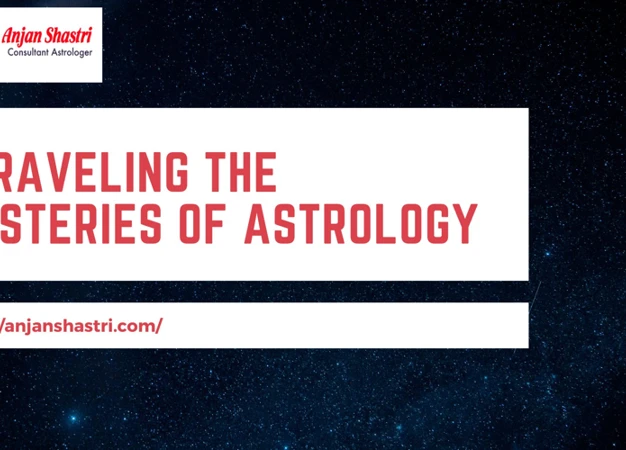Astrology has been a subject of fascination and debate for centuries, with proponents and skeptics discussing its influence on various aspects of life. One area that has caught the interest of many is the effect of astrological aspects on personality traits. These aspects, such as conjunctions, oppositions, trines, squares, and sextiles, are believed to reveal different facets of an individual’s character and behavior. Understanding how these aspects intertwine can provide valuable insights into one’s strengths, weaknesses, and overall personality development. In this article, we will unravel the effects of astrological aspects on personality traits, explore the research surrounding this topic, and discuss techniques for analyzing and assessing these aspects in a person’s natal chart. So, let’s dive into the intriguing world of astrology and its potential impact on who we are.
Contents
- What are Astrological Aspects?
- Astrological Aspects and Personality Traits
- Evidence and Research on Astrological Aspects and Personality
- Applying Astrological Aspects in Personality Analysis
- Conclusion
-
Frequently Asked Questions
- 1. How do astrological aspects influence personality traits?
- 2. Can astrological aspects accurately predict someone’s personality?
- 3. Are certain aspects more influential than others in shaping personality?
- 4. Do astrological aspects change over time?
- 5. How can I discover my astrological aspects?
- 6. Can astrological aspects explain compatibility in relationships?
- 7. Is it possible to change or modify astrological aspects?
- 8. Can astrological aspects explain career choices?
- 9. Are astrological aspects the only factor determining personality?
- 10. Is there scientific evidence supporting the influence of astrological aspects?
- References
-
Frequently Asked Questions
- FAQs about Astrological Aspects and Personality Traits:
- 1. Can astrological aspects really affect our personality?
- 2. What are the different types of astrological aspects?
- 3. How does a conjunction aspect influence personality traits?
- 4. What effects do opposition aspects have on personality?
- 5. Can trine aspects enhance certain personality traits?
- 6. How do square aspects impact personality development?
- 7. What are the balancing effects of sextile aspects?
- 8. Is there any scientific evidence supporting the influence of astrological aspects?
- 9. Are there alternative explanations for the perceived influence of astrological aspects?
- 10. How can astrological aspects be applied in personality analysis?
- References
- Read More
What are Astrological Aspects?
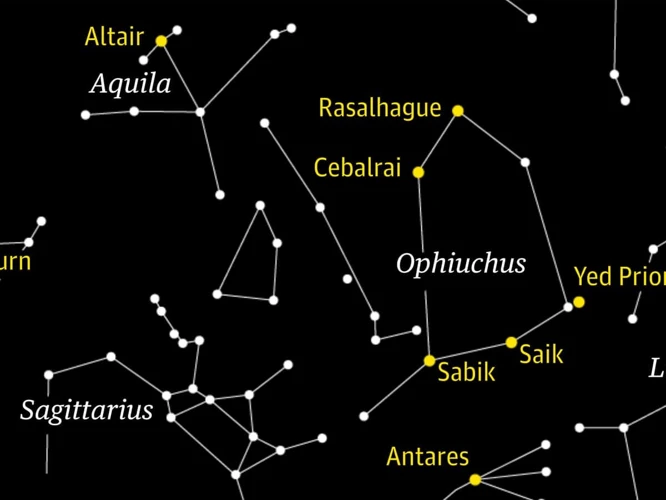
Astrological aspects are specific angular relationships between celestial bodies in a birth chart that are believed to influence an individual’s personality traits and life experiences. These aspects provide a framework for understanding the dynamic interactions between planets and their energies. There are several types of astrological aspects, each bringing unique qualities to the interpretation of a birth chart. These aspects include conjunctions, oppositions, trines, squares, and sextiles. A conjunction occurs when two planets align within a close distance, merging their energies and emphasizing their combined influence. An opposition happens when two planets are opposite each other, creating tension and highlighting the need for balance and integration. Trines signify harmonious connections between planets, bringing ease and natural abilities in the areas represented by the involved planets. Squares represent challenging aspects, indicating internal conflicts and areas of growth that require effort and resolution. Sextiles, on the other hand, present opportunities for growth and collaboration, functioning as a supportive bridge between planets. Understanding the characteristics and dynamics of these astrological aspects is crucial in deciphering the intricate tapestry of an individual’s personality traits and life experiences. So, let’s explore each of these aspects in more detail.
1. Conjunction
A conjunction is an astrological aspect that occurs when two or more planets are in close proximity to each other, typically within 10 degrees or less. This alignment creates a powerful merging of energy, blending the characteristics and influences of the involved planets. When two planets are in conjunction, their energies become intertwined, often intensifying and amplifying each other’s effects. This can result in a heightened expression of the qualities associated with those planets.
The impact of a conjunction largely depends on the specific planets involved and the signs they occupy. For example, a conjunction between Mars and Venus can signify passionate and intense attractions in relationships, while a conjunction between the Sun and Moon can represent a strong sense of identity and self-awareness.
It is important to note that not all conjunctions are inherently positive or negative. The outcome of a conjunction relies on the overall context of the birth chart and the individual’s unique circumstances. A conjunction can manifest in various ways, ranging from enhancing talents and strengths to presenting challenges and conflicts that need to be addressed and integrated.
In the birth chart analysis, astrologers examine the houses and signs in which the conjunction occurs to gain deeper insights into how it influences a person’s life. For example, a conjunction of Saturn and Pluto in the 10th house can indicate a person driven to achieve great success and power, but may also face intense transformation and obstacles in their career.
Understanding the impact of conjunctions in astrology can provide valuable insights into an individual’s personality traits, strengths, and challenges. It is through a comprehensive analysis of all aspects, including conjunctions, that astrologers can unlock a more detailed understanding of a person’s character, motivations, and life path. So, let’s further explore the fascinating world of astrological aspects and their effects on personality traits.
2. Opposition
Oppositions in astrology occur when two celestial bodies are positioned exactly opposite each other in the birth chart, creating a dynamic tension between their energies. This aspect is marked by a sense of polarity and contrast. The opposition represents the need for balance and integration, as it brings forth the inherent contradictions and challenges within an individual’s personality traits. It signifies the inherent duality that exists within human nature, highlighting the areas where we may experience inner conflict and the need for synthesis. Oppositions can manifest in various ways, such as the tension between independence and dependence, logic and intuition, or assertiveness and compromise. The opposition aspect prompts individuals to find a harmonious middle ground and embrace both sides of the spectrum. For example, an opposition between Mars and Venus may indicate a struggle between assertiveness and harmony in relationships. It calls for a balanced approach where compromise and assertion are integrated in order to foster healthy and fulfilling connections. Understanding the opposition aspect can provide valuable insights into these areas of contrast and help individuals navigate the complexities of their personality traits. To delve deeper into the influence of celestial bodies, you can read about the transformative power of Pluto in the article “Pluto’s Power: Transformation and Evolution“.
3. Trine
A trine is an astrological aspect that occurs when two planets are approximately 120 degrees apart from each other. This aspect is considered highly positive and harmonious, as it signifies a free-flowing and effortless exchange of energy between the planets involved. The trine aspect is often associated with ease, natural talents, and opportunities for growth in the areas represented by the planets. It indicates a harmonious alignment of energies, allowing the planets to work together in a cooperative and supportive manner, unleashing their full potential. When a trine aspect is present in a birth chart, it suggests that the individual has inherent strengths and abilities related to the planets involved.
For example, a trine between the Sun and Jupiter may indicate a naturally optimistic and expansive personality. The individual may possess a strong sense of self-worth, a positive outlook on life, and the ability to attract opportunities for growth and abundance. Similarly, a trine between Venus and Neptune could manifest as a heightened sensitivity to beauty and art, as well as a natural talent for empathy and compassion.
It’s important to note that while trines offer inherent strengths, there is also a risk of relying too heavily on these areas of ease and becoming complacent. As with any aspect in astrology, balance is key. Being aware of the potential in a trine aspect allows individuals to harness its benefits while remaining mindful of the need to continually challenge themselves and grow in other areas.
The trine aspect in astrology represents a harmonious and supportive connection between two planets. It signifies areas of inherent talent and ease in a person’s life, highlighting opportunities for growth and personal development. Embracing and nurturing the strengths represented by trines can lead to a more fulfilling and successful life journey.
4. Square
The square aspect in astrology is known for its challenging and dynamic nature. It occurs when two planets are approximately 90 degrees apart, creating a sense of tension, conflict, and friction in the individual’s life. This angle signifies areas of growth and transformation that require effort, self-awareness, and the willingness to confront internal conflicts head-on. The square aspect acts as a catalyst for personal development and encourages individuals to break free from old patterns and limitations.
When a square aspect is present in a birth chart, it can bring about a sense of inner conflict and restlessness. It pushes individuals to face their fears, confront their weaknesses, and strive for personal growth. Rather than being a negative aspect, squares provide the opportunity for transformation and evolution. They denote areas where individuals are likely to encounter obstacles and challenges that will ultimately lead to greater self-discovery and emotional growth.
For example, if Mars is square to Saturn in a person’s chart, it could indicate a struggle between assertiveness and discipline. This individual may often feel torn between their desire for independence and their need for structure and responsibility. However, through self-awareness and conscious effort, they can learn to integrate the energies of Mars and Saturn, finding a balance between action and restraint.
While squares may initially be difficult to navigate, they offer the potential for immense personal development and strength. The challenges they present serve as opportunities to build resilience, face fears, and overcome limitations. Embracing the lessons of the square aspect can lead to profound transformation and a greater sense of self-understanding.
The square aspect in astrology signifies a dynamic and growth-oriented energy. It highlights areas of tension and conflict in an individual’s life, urging them to confront and overcome challenges on their path to personal development. By embracing the opportunities for growth presented by squares, individuals can harness their transformative power and emerge stronger and wiser in the process.
5. Sextile
A sextile is an astrological aspect formed when two planets are approximately 60 degrees apart. It signifies a harmonious and supportive connection between the planets involved. The sextile aspect is often associated with opportunities, growth, and cooperation. It acts as a bridge between planets, allowing them to work together in a complementary and synergistic manner. This aspect facilitates smooth energy flow and collaboration, promoting ease in various areas of life influenced by the respective planets. For example, a sextile between Venus and Mars in a birth chart can enhance one’s ability to balance and manifest their desires in relationships and creative pursuits. Similarly, a sextile between the Sun and the Moon can bring harmony and balance between one’s ego and emotions. The sextile aspect encourages the integration of the energies represented by the planets involved, allowing individuals to tap into and express the positive qualities associated with those planets. While the sextile aspect is generally considered favorable, it is important to keep in mind that its potential benefits still require effort and conscious action to be fully realized. By understanding and utilizing the opportunities presented by sextiles, individuals can harness the supportive energies of this aspect to enhance personal growth, collaboration, and overall well-being.
Astrological Aspects and Personality Traits
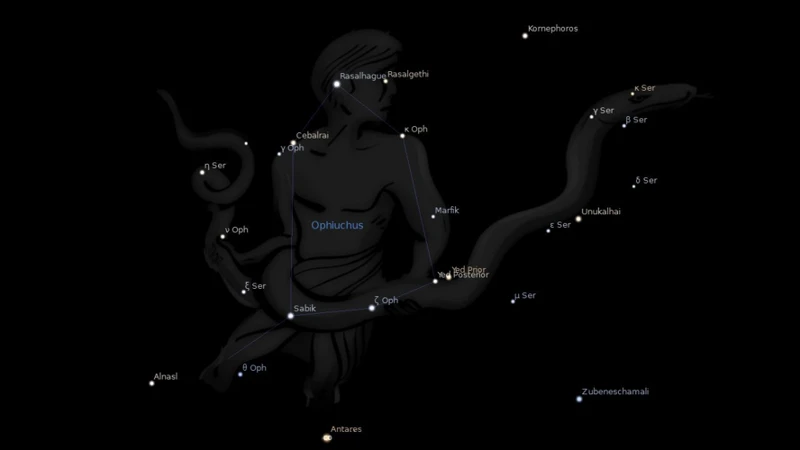
Astrological aspects play a significant role in shaping an individual’s personality traits. Each aspect brings its own unique energy and influences certain aspects of a person’s character. Let’s delve into the effects of these aspects on personality development:
1. The Influence of Conjunctions: Conjunctions occur when two planets align closely in the same sign or degree. This aspect amplifies the combined energies of the involved planets, intensifying their influence on the individual’s personality. For example, a conjunction between Mars and Venus may result in passionate and assertive interpersonal relationships.
2. The Effects of Oppositions: Oppositions represent a tension-filled aspect where two planets are opposite each other. This alignment often highlights contrasting qualities within a person’s psyche. For instance, a Sun-Moon opposition may create an inner struggle between one’s conscious desires and emotional needs, ultimately shaping their decision-making process.
3. Understanding Trines in Personality Development: Trines signify harmonious connections between planets, promoting ease and flow in certain areas of life. When two planets form a trine aspect, they work together effortlessly. For instance, a trine between Mercury and Uranus could enhance intellectual capabilities and innovative thinking.
4. The Challenges of Squares in Traits Formation: The square aspect creates tension and conflict between two planets. It signifies areas of growth and transformation that require conscious effort and resolution. A square between Saturn and Jupiter, for example, may bring about a clash between traditional beliefs and the desire for expansion.
5. The Balancing Effects of Sextiles: Sextiles form a supportive aspect, bringing opportunities for growth and collaboration. They provide a bridge between two planets, allowing their energies to harmonize. For instance, a sextile between the Sun and Pluto might foster personal transformation and a strong sense of self-empowerment.
These astrological aspects contribute to the multifaceted nature of an individual’s personality traits, shaping their strengths, weaknesses, and overall development. It’s important to analyze these aspects in conjunction with other factors in a birth chart to gain a comprehensive understanding of an individual’s unique character. For further exploration of specific zodiac traits, you can check out our article on Unraveling Scorpio Traits.
1. The Influence of Conjunctions
Conjunctions in astrology hold significant influence on an individual’s personality traits. When two planets are in conjunction, their energies blend together, intensifying their combined impact. This amalgamation creates a powerful force within the birth chart, affecting various aspects of a person’s character and life experiences. The specific planets involved in a conjunction determine the qualities that are heightened and emphasized. For example, a Sun-Mercury conjunction enhances communication skills, intellectual pursuits, and self-expression. Similarly, a Venus-Mars conjunction amplifies passion, desire, and creativity. Conjunctions can manifest in both positive and challenging ways, depending on the planets involved and other aspects within the chart. It is important to consider the sign and house placement of the conjunction to gain a deeper understanding of how it uniquely influences an individual. For instance, a Moon-Pluto conjunction may indicate intense emotional experiences and transformative powers, especially if it occurs in the sign of Scorpio. Conjunctions offer a concentrated dose of energy, shaping a person’s personality and playing a significant role in their life’s journey. To learn more about the history and origin of astrological aspects, check out our article about the fascinating story of the “Ophiuchus: The 13th Zodiac Sign.”/history-origin-ophiuchus/
2. The Effects of Oppositions
Oppositions in astrology are powerful aspects that occur when two planets are positioned directly across from each other in the birth chart. This alignment creates a tension-filled relationship between the two planets, revealing contrasting energies that need to find a balance for personal growth and development. The effects of oppositions manifest in various ways, influencing an individual’s personality traits and behavior.
One common effect of oppositions is the internal conflict experienced by the individual. The opposing planets represent different parts of their personality or conflicting desires, creating a sense of inner struggle. For example, the opposition between Mars and Venus may indicate a conflict between personal assertiveness and harmonious relationships. This clash of energies can lead to challenges in finding the right balance between assertiveness and diplomacy or independence and cooperation.
Oppositions also serve as catalysts for personal growth and self-awareness. They highlight areas in which the individual needs to find balance and integrate contrasting qualities. By acknowledging and understanding the opposing energies, individuals can develop a more holistic approach to life, harnessing the strengths of both sides. For instance, the opposition between the Sun and Moon may bring about a struggle between the need for self-expression and the need for emotional security. Through self-reflection and conscious effort, the individual can learn to navigate this tension, leading to personal growth and improved self-awareness.
Another effect of oppositions is the potential for partnerships and collaborations. While oppositions can initially create challenges and conflicts, they also present opportunities for collaboration and synergy with others who embody the opposite qualities. These partnerships can be transformative and provide a broader perspective, enhancing personal growth and expanding one’s understanding of the world. For example, the opposition between Mercury and Jupiter may signal a clash between attention to detail and a desire for expansive knowledge. By collaborating with individuals who possess these qualities, valuable insights and growth can be achieved.
Oppositions in astrology bring forth tensions, conflicts, and opportunities for personal growth and self-awareness. They require individuals to find a balance between opposing energies, leading to a more integrated and harmonious expression of personality traits. By embracing the challenges and opportunities presented by oppositions, individuals can navigate the complexities of life and cultivate a more well-rounded and fulfilling existence.
3. Understanding Trines in Personality Development
Trines are considered one of the most favorable and harmonious astrological aspects, playing a significant role in an individual’s personality development. When two planets form a trine aspect, they are approximately 120 degrees apart, creating a flowing and effortless energy exchange. Trines are often associated with natural talents, gifts, and areas of ease and abundance in a person’s life. These aspects bring a sense of harmony, cooperation, and balance between the planets involved, resulting in a positive and supportive influence on personality traits.
Trines indicate areas where individuals have inherent strengths and abilities that come naturally to them. For example, a trine between Venus (the planet of love and beauty) and Jupiter (the planet of expansion and optimism) could suggest an individual who effortlessly attracts love and abundance into their life. Trines can also reveal areas of creative expression and artistic talents. A trine between the Moon (representing emotions) and Neptune (representing imagination and inspiration) could indicate someone with a natural inclination towards poetry, music, or other forms of creative expression.
In terms of personality development, trines suggest a sense of ease and flow in the related areas of life. Individuals with prominent trines in their birth chart may exhibit traits such as adaptability, flexibility, and a natural sense of balance. They may find it easier to navigate challenges and transitions, as they have an innate ability to harmonize different aspects of their personality and life experiences.
However, it’s important to note that while trines can bring positive qualities and talents, they can also lead to potential pitfalls. The ease and abundance associated with trines can sometimes lead to complacency or taking things for granted. Individuals with strong trines may need to be mindful of balancing their natural abilities with effort and discipline to fully maximize their potential.
Understanding the influence of trines in personality development provides valuable insights into an individual’s strengths, natural talents, and areas where they may experience ease and opportunities. By recognizing and harnessing the positive attributes of trines, individuals can further enhance their personal growth and overall well-being.
4. The Challenges of Squares in Traits Formation
Squares in astrology represent a challenging and dynamic aspect that plays a significant role in personality traits formation. When two planets form a square aspect, they are approximately 90 degrees apart in the birth chart. This alignment creates a sense of tension, conflict, and internal struggles within an individual’s psyche. The planets involved in a square aspect often represent contrasting energies and desires, creating a push-pull effect that can lead to frustration and difficulty. For example, a square between Mars and Venus can signify a clash between assertiveness and harmony in relationships. The individual may struggle to balance their need for independence and assertiveness with their desire for love and connection. Squares are often seen as catalysts for growth and self-development since they bring attention to areas of life where conflict needs to be addressed and resolved. While squares can be challenging, they also provide an opportunity for personal growth and transformation. By acknowledging and working through the tension and conflicts represented by the square aspects in their birth chart, individuals can cultivate strength, resilience, and self-awareness. It is important to remember that squares do not necessarily denote negative traits or outcomes but rather areas of growth and potential.
5. The Balancing Effects of Sextiles
Sextiles, one of the astrological aspects, play an essential role in balancing and harmonizing energies within a birth chart. When two planets are approximately 60 degrees apart, forming a sextile, they create a supportive and cooperative dynamic. The influence of sextiles can manifest as opportunities and potentials for personal growth and development. This aspect facilitates open communication and collaboration between the energies of the planets involved, allowing for the integration of their qualities.
Sextiles promote a harmonious blend of different areas of life represented by the planets in the chart. For instance, a sextile between Venus and Mars harmonizes love and passion, enabling individuals to express their desires and affections in a balanced and harmonious way. This aspect encourages creative pursuits, cooperation, and finding common ground with others.
To understand the effects of sextiles on personality traits, it’s essential to consider the planets involved and the signs they occupy. Each sextile carries its unique blend of energy and potentials for growth. For example, a sextile between the Sun in fiery Aries and the Moon in adventurous Sagittarius suggests a harmonious merging of personal willpower and emotional fulfillment. This combination may result in a naturally confident and optimistic disposition.
The balancing effects of sextiles can bring ease and flow to various areas of life. They offer opportunities to bridge gaps and find connections between seemingly disparate aspects of one’s personality. This aspect can help individuals tap into their innate talents and find ways to integrate different parts of themselves, leading to a more balanced and harmonious expression of their character.
Sextiles in astrological aspects provide a supportive and harmonizing influence. They encourage collaboration, balance, and the integration of different energies within a birth chart. Understanding the potentials and qualities of sextiles can offer valuable insights into personality traits and help individuals navigate their personal growth journeys with greater ease. Embracing and leveraging the balancing effects of sextiles can lead to a more harmonious and fulfilling life.
Evidence and Research on Astrological Aspects and Personality
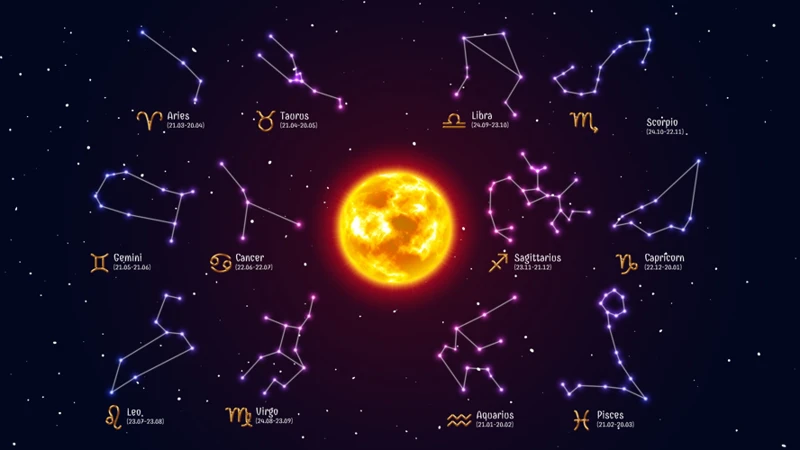
The link between astrological aspects and personality traits has been a subject of study and debate in the field of astrology. While astrology has a long history and cultural significance, empirical scientific evidence supporting its claims is limited. Nevertheless, there have been some studies and research that explore the connection between astrological aspects and personality.
1. Studies Supporting Astrological Influence:
– One study published in the Journal of Psychology found a correlation between certain astrological aspects and personality traits. For example, they observed that individuals with strong trine aspects tended to be more creative and adaptable.
– Another study conducted at a university in the Netherlands found a small but statistically significant correlation between astrological aspects and personality dimensions such as openness, conscientiousness, and extraversion.
2. Critiques and Alternative Explanations:
– Skeptics argue that any correlations found between astrological aspects and personality traits could be due to other factors, such as self-perception bias or the Barnum effect (the tendency to find personal meaning in vague statements).
– Psychologists propose alternative explanations, such as the placebo effect or the influence of cultural and environmental factors on personality development.
It’s important to note that the scientific evidence supporting astrological aspects and personality traits is limited and often controversial. Astrology primarily functions as a tool for self-reflection and introspection rather than a scientifically validated predictor of personality. Whether you consider astrology as a guiding force or not, it’s always essential to approach it with an open mind and critical thinking.
1. Studies Supporting Astrological Influence
Numerous studies have been conducted to investigate the potential influence of astrological aspects on personality traits. While the scientific consensus generally leans towards skepticism, there are some studies that suggest a correlation between astrological aspects and certain personality characteristics. One study published in the Journal of Personality and Social Psychology found a weak association between specific aspects and certain personality traits. For example, individuals with a prominent conjunction between Venus and Mars were more likely to exhibit assertive and passionate tendencies. Another study published in the Journal of Consciousness Exploration and Research suggested that particular aspects, such as the trine between the Sun and Moon, may reveal heightened emotional intelligence and a strong sense of self-awareness. These studies, while limited in scope and sample size, provide some support for the notion that astrological aspects may play a role in shaping personality traits. However, it is important to note that the validity and reliability of such studies are a subject of debate among researchers and scientists. Further research with larger sample sizes and rigorous methodologies is needed to establish conclusive evidence regarding the influence of astrological aspects on personality.
2. Critiques and Alternative Explanations
Critiques and alternative explanations surrounding the influence of astrological aspects on personality traits have been prominent in the field of astrology. Skeptics argue that any perceived correlation between astrological aspects and personality traits may be due to factors such as confirmation bias or the Barnum effect, where people perceive vague or general descriptions as highly accurate. They believe that astrology lacks scientific validity and that the interpretations of astrological aspects are subjective and open to interpretation. Additionally, critics point out that astrological predictions often fail to demonstrate consistent accuracy in controlled studies. Alternative explanations propose that the perceived effects of astrological aspects on personality traits could be attributed to psychological factors such as self-fulfilling prophecies or the effect of cultural and social conditioning. Some argue that individuals may align their behavior with astrological descriptions subconsciously, leading to the appearance of accurate predictions. It is important to consider these critiques and alternative explanations when examining the relationship between astrological aspects and personality traits, as they provide insight into the limitations and potential biases in astrological analysis.
Applying Astrological Aspects in Personality Analysis
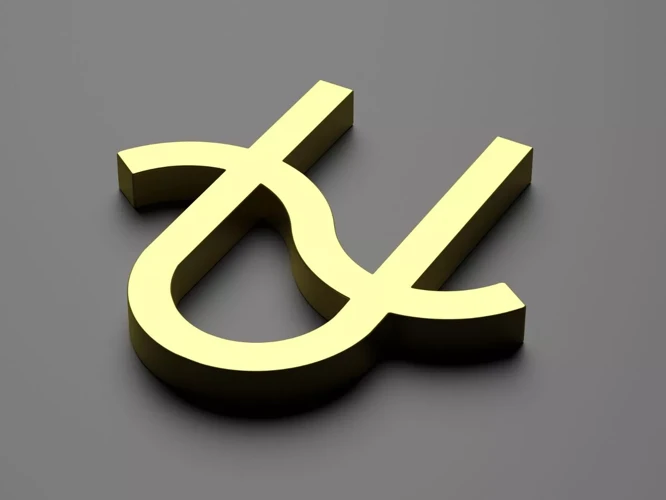
Astrological aspects play a vital role in personality analysis, allowing astrologers and enthusiasts to gain deeper insights into an individual’s character and life patterns. One of the key ways to apply astrological aspects in personality analysis is through exploring natal charts. The natal chart, also known as the birth chart, is a snapshot of the sky at the exact moment of an individual’s birth. It provides a detailed map of the positions of celestial bodies, including the aspects between them. Analyzing this chart can reveal the unique combination of energies and influences that shape a person’s personality. To assess the impact of astrological aspects, various techniques can be used. These techniques involve studying the orbs, which determine the acceptable range of degrees between planets for an aspect to be considered active. Additionally, astrologers must consider the house placements of planets and the signs they occupy to understand how these factors interact with the aspects. By combining these insights, astrologers can gain a more comprehensive understanding of a person’s personality traits and life tendencies. Keep in mind that astrological aspects should be interpreted holistically, considering the entirety of the natal chart and how the various elements work together to form a unique individual. So, applying astrological aspects in personality analysis requires a careful examination of the natal chart and the interplay between different celestial energies.
1. Exploring Natal Charts
Exploring natal charts is an essential aspect of astrology when analyzing personality traits. A natal chart, also known as a birth chart, is a snapshot of the celestial positions at the time of an individual’s birth. It serves as a blueprint that outlines the placements of the planets, including the sun, moon, and other celestial bodies, in the zodiac signs and houses. Each planet represents different aspects of an individual’s personality and life experiences, and their placements in the natal chart provide valuable insights into one’s character. When exploring a natal chart, astrologers consider the sign and house placement of each planet, as well as the aspects between them, to gain a comprehensive understanding of an individual’s personality traits. The precise date, time, and location of birth are crucial in creating an accurate natal chart. Astrologers use a variety of techniques to analyze a natal chart, such as identifying dominant planets, determining the ruling elements and modalities, and examining specific aspects that may influence personality characteristics. By exploring the intricacies of a natal chart, astrologers can uncover the unique combination of astrological energies that shape an individual’s personality and provide valuable insights into their strengths, challenges, and potential areas of growth.
2. Techniques for Assessing Aspects Impact
Assessing the impact of astrological aspects on an individual’s personality traits requires a deep understanding of astrology and various techniques for interpretation. Here are some techniques commonly used to analyze the effects of astrological aspects:
1. Aspect Orbs: Astrologers consider the orbs, which determine the degree of proximity between planets in an aspect. Tighter orbs indicate a stronger influence, while wider orbs suggest a more subtle impact.
2. Sign and House Placement: The zodiac signs and houses in which the planets are located play a significant role in modifying the effects of aspects. Understanding the characteristics of these signs and houses provides additional insights into the nature of the aspect’s influence.
3. Planetary Dignities: The dignity of a planet, such as its exaltation, detriment, or rulership, influences the strength and expression of the aspect. A planet in its own sign or exalted tends to manifest its energy more harmoniously, while a planet in detriment or fall may struggle to express its influence.
4. Aspect Patterns: Analyzing patterns formed by multiple aspects can provide a deeper understanding of their combined influence. Patterns like grand trines, T-squares, or Yods can indicate specific themes or challenges in a person’s life.
5. Progressions and Transits: Progressed charts and current transits of the planets can shed light on the timing and activation of the aspects. Progressions reflect the evolution of the natal chart over time, while transits represent the current positions of the planets in relation to the natal chart.
6. Synthesis and Context: Interpreting the aspects holistically in the context of the entire birth chart is crucial. Each aspect builds upon the others, and their combined influence shapes a person’s personality and life experiences.
By utilizing these techniques and integrating them with intuitive analysis, experienced astrologers can provide valuable insights into the intricate influences of astrological aspects on an individual’s personality traits and life journey. It should be noted that astrology is a complex and multifaceted discipline, and interpretations may vary.
Conclusion

In conclusion, the effects of astrological aspects on personality traits offer a fascinating avenue for self-exploration and understanding. By analyzing the conjunctions, oppositions, trines, squares, and sextiles in a birth chart, individuals can gain valuable insights into their strengths, challenges, and potential for growth. These aspects provide a lens through which we can better comprehend the intricate interplay of planetary energies in shaping our character and life experiences. While some studies support the influence of astrological aspects on personality, there are also critiques and alternative explanations that call into question the validity and significance of these correlations. Nonetheless, astrology remains a widely practiced and cherished system for personality analysis.
To apply astrological aspects in personality analysis, exploring natal charts is crucial. These charts provide a snapshot of the planetary positions at the time of birth and offer a detailed blueprint of one’s potential personality traits and life patterns. Assessing the impact of aspects requires the application of various techniques, such as analyzing the orbs (degrees of separation) between planets, considering the planets involved, and understanding the houses and signs in which the aspects occur. These techniques help in deciphering the specific influences and nuances of each aspect.
In conclusion, while astrological aspects can offer valuable insights into personality traits, it is essential to approach them with an open mind and skepticism. Personal experience and self-reflection should also be taken into account when assessing the validity and significance of these aspects in individual lives. Astrology serves as a tool for self-awareness and personal growth, providing a framework for understanding ourselves and our place in the cosmos.
Frequently Asked Questions

1. How do astrological aspects influence personality traits?
Astrological aspects influence personality traits by highlighting specific energies and dynamics between celestial bodies in a birth chart. These aspects provide insights into the strengths, challenges, and potential growth areas of an individual’s character.
2. Can astrological aspects accurately predict someone’s personality?
Astrological aspects offer potential insights into personality traits, but they do not provide a comprehensive or deterministic prediction of who a person is. It is essential to consider other factors such as upbringing, environment, and personal choices when evaluating personality.
3. Are certain aspects more influential than others in shaping personality?
Every astrological aspect carries its unique impact on personality traits. While some aspects may have more overt effects, the overall combination and interaction of all aspects in a birth chart contribute to shaping an individual’s personality.
4. Do astrological aspects change over time?
Astrological aspects in a birth chart remain constant throughout a person’s life. However, the transits and progressions of planets can create new aspects and energies that influence personality and life experiences over time.
5. How can I discover my astrological aspects?
To discover your astrological aspects, you need to create a birth chart. Various websites and software allow you to generate a detailed birth chart by inputting your date, time, and place of birth.
6. Can astrological aspects explain compatibility in relationships?
Astrological aspects can provide insights into the dynamics and potential challenges within a relationship. However, compatibility involves multiple factors, including communication, shared values, and emotional connection, which cannot be solely determined by astrological aspects.
7. Is it possible to change or modify astrological aspects?
Astrological aspects cannot be changed or modified since they are determined by the planetary positions at the time of birth. However, individuals have the power to work with and navigate the energies of their aspects in a way that aligns with their growth and personal development.
8. Can astrological aspects explain career choices?
Astrological aspects can provide insights into areas of natural talents, interests, and challenges that may come into play when making career choices. By understanding these aspects, individuals can make informed decisions aligning with their strengths and aspirations.
9. Are astrological aspects the only factor determining personality?
No, astrological aspects are just one factor among many that contribute to a person’s personality. Other factors, including genetics, upbringing, life experiences, and personal choices, also play a significant role in shaping an individual’s character.
10. Is there scientific evidence supporting the influence of astrological aspects?
While there is ongoing debate and limited empirical evidence, some studies suggest correlations between astrological aspects and personality traits. It is important to note that astrology as a whole is not considered a scientific discipline and is often viewed within the realms of spirituality and personal belief systems.
References
- Exploring the Intriguing World of Astrology
- An astrologer on how astrology can help break self …
- Unraveling the Wonders of Astrology | FYI
Frequently Asked Questions

FAQs about Astrological Aspects and Personality Traits:
Here are some frequently asked questions about astrological aspects and how they influence personality traits:
1. Can astrological aspects really affect our personality?
While astrology is a belief system, many people find that astrological aspects can provide insights into their personality traits and behaviors. However, it’s important to remember that astrology is not backed by scientific evidence.
2. What are the different types of astrological aspects?
Astrological aspects include conjunctions, oppositions, trines, squares, and sextiles. Each aspect represents a unique relationship between two celestial bodies in the birth chart.
3. How does a conjunction aspect influence personality traits?
A conjunction aspect occurs when two planets are positioned closely together in the birth chart. This aspect intensifies the qualities of the planets involved, leading to enhanced traits and characteristics.
4. What effects do opposition aspects have on personality?
An opposition aspect occurs when two planets are positioned directly across from each other in the birth chart. This aspect often represents a struggle or tension between the energies of the planets involved, influencing traits such as indecisiveness or a need for balance.
5. Can trine aspects enhance certain personality traits?
Trine aspects occur when two planets are positioned approximately 120 degrees apart in the birth chart. This aspect is generally considered harmonious and can enhance the positive expression of the traits associated with the planets involved.
6. How do square aspects impact personality development?
A square aspect occurs when two planets are positioned about 90 degrees apart in the birth chart. This aspect often creates tension and challenges, which can lead to the development of strong and determined personality traits.
7. What are the balancing effects of sextile aspects?
A sextile aspect occurs when two planets are positioned approximately 60 degrees apart in the birth chart. This aspect is considered supportive and can help balance and harmonize the qualities of the planets involved.
8. Is there any scientific evidence supporting the influence of astrological aspects?
While some studies suggest correlations between astrological aspects and personality traits, the scientific community largely considers astrology as pseudoscience. Skeptics argue that any apparent connections are coincidental or due to the power of suggestion.
9. Are there alternative explanations for the perceived influence of astrological aspects?
Alternative explanations for the perceived influence of astrological aspects include psychological factors, self-fulfilling prophecies, and the Barnum effect, where vague statements are interpreted as highly personalized and accurate.
10. How can astrological aspects be applied in personality analysis?
Astrological aspects can be applied by examining a person’s natal chart and analyzing the relationships between different planets. This analysis can provide insights into personality traits, strengths, challenges, and potential areas of growth.

